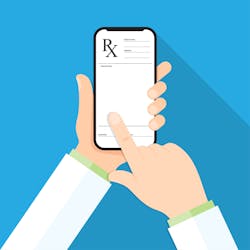Da Vinci Project Makes Progress on Prior Authorization Use Cases
As the HL7 FHIR standard effort gained momentum, payers started to look at how it might be valuable in the increasing number of situations in which they need to share data with clinicians. In 2018 the Da Vinci Project was born as a multi-stakeholder effort led by payers, providers and health IT vendors to address use cases in value-based care. Last week, project leaders presented an update on the project’s progress to date, including an initial use case involves medication reconciliation.
Jocelyn Keegan, payer practice lead for Point of Care Partners, a consulting firm offering expertise in payer/provider collaboration, value-based care and software product development, is the program manager of the Da Vinci project. Explaining its origins, she said that as payers and clinicians began shifting to value-based care, they realized there were no standards for the data that needs to flow.
Looking at FHIR work in the clinical sphere such as the Argonaut Project, payers saw an opportunity. “We wanted to cut down on custom one-off work between payers and providers, Keegan said, and reduce the need for unique solutions. “We felt like the way we would do that is to leverage FHIR, constrain it with implementation guides, high-quality testing, and develop reference implementations of each side of the API. The onus is on us as an industry to support providers in the shift to value with the right information and tools. We need to make sure we are arming people in value-based contracts with the tools and data they need to be successful.”
The basic idea is that with a FHIR-based API, providers can discover in real-time specific payer requirements that may affect the ability to have certain services or devices covered by the responsible payer. The ambitious goal is that in less than two years, Da Vinci efforts will drive standards for the exchange of information critical to patient care.
With a use case approach, Keegan said, they are starting to unlock data shared between the two parties. It was grown to 14 use cases more than 30 members, including provider organizations such as Texas Health Resources. Sutter Health, Oregon Health & Science University, MultiCare Connected Care, and Weill Cornell.
Three of the use cases will be part of HL7 balloting reconciliation as draft standards in May:
• Data Exchange for Quality Measures (DEQM)
• Coverage Requirements Discovery (CRD)
• Comment Documentation Templates and Rules (DTR)
Bob Dieterle, CEO and owner of EnableCare, described work on the prior authorization use cases. “We want to allow providers in the clinical work flow to ask the payer if there something they need to do to know whether something is covered? If documentation is required to show medical necessity, the provider can ask the question of the payer within their clinical work flow.”
For instance, when a physician is placing an order around discharge, it might trigger a request to the payer providing the context and allowing the payer to interact via token with the clinical record to understand the context of the patient and treatment planned, Dieterle said. The payer can provide back through cards a simple reminder of something that needs to be done, or it could be linked to Smart on FHIR app to do something more complex, he added. “Or it could provide back a FHIR resource to suggest an alternative or queue up a task for someone else in the clinical work flow to address.”
Viet Nguyen, M.D., an internist, pediatrician and clinical informaticist, is technical director for the project and the chief medical officer for the Health Services Platform Consortium. He described the process Da Vince is following with use cases to create a common framework. He also described a demonstration the Da Vinci team did at a HIMSS Interoperability Showcase, showing the ability to exchange information between payers and providers using FHIR and CDS Hooks.
The vignette they used describes a clinical encounter for 78-year-old Asian women named Dara that starts with her primary care physician, proceeds to a cardiologist who admits Dara to the hospital for an angiogram and observation, where it is determined that her chronic obstructive pulmonary disease has progressed to the point that she needs supplemental oxygen. As Dara returns to her primary care physician, her previous medications are reconciled with those prescribed at discharge, the PCP reports the medication reconciliation, in support of a quality measure the Medicare Advantage program is following for its members.
Da Vince is going to have a public Connectathon in Jacksonville, Fla., on May 29-30, with tracks on Data Exchange for Quality Measures, Prior Auth Support (including CRD/DTR), Clinical Data Exchange (CDex) Combined with Attachments, and Payer Data Exchange (PDex).


